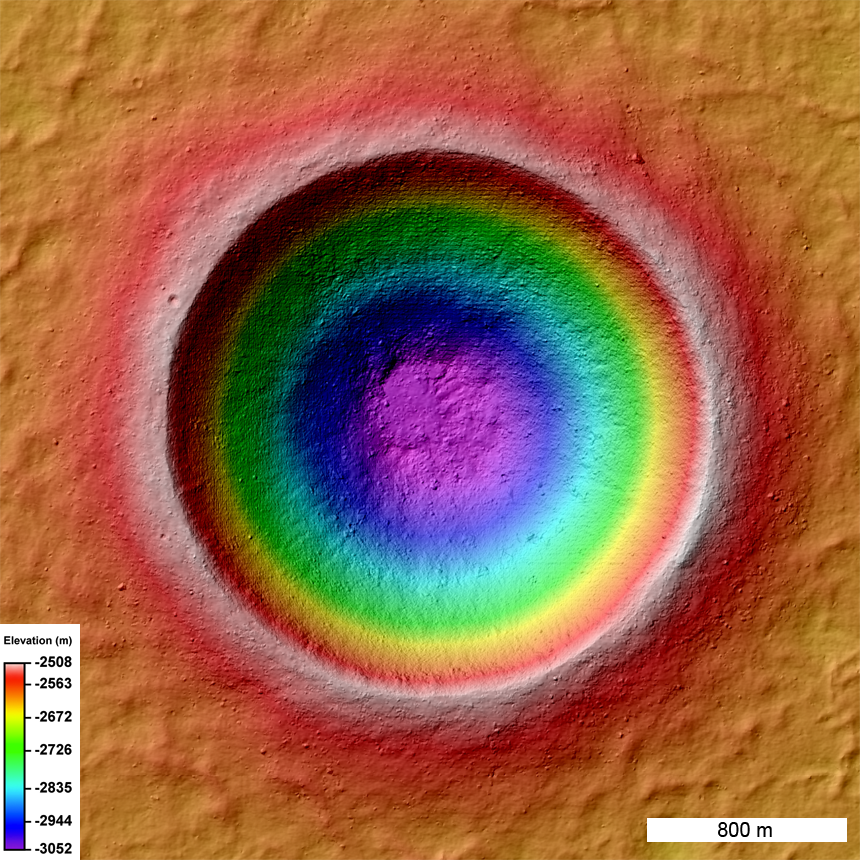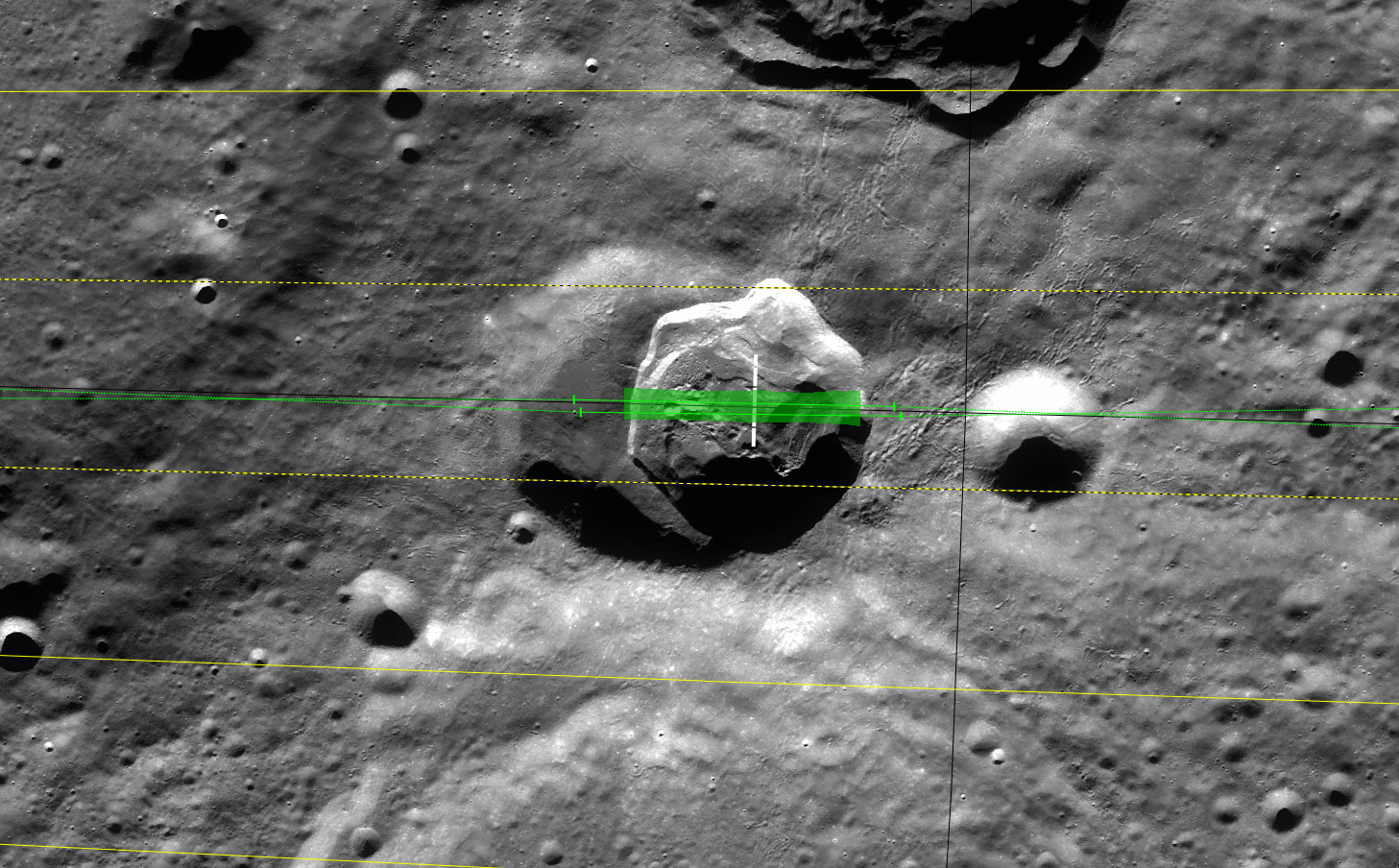Welcome to the exciting world of Special Targeting! My name is Christian Alf, and I will guide you through this special adventure. As a member of the LROC Operations Staff I work on the Uplink Team, for which Zack gave an introduction. One of the responsibilities of an uplinker is to plan special observations. Don't be fooled, we love each of our 600+ images we target a day, but we dedicate a lot more time to a few of them. Typically, these observations require moving the whole spacecraft, coordinating with other instruments, or crunching some numbers to ensure the viewing geometry is optimal. There are five main types of special targets: Geometric Stereo, Obliques, Limb Views, Earth Calibrations, and Ride-alongs with other instruments. Since we target geometric stereo at a higher frequency, lets talk about them first.
Geometric stereo is how LROC sees the Moon in 3D. These types of observations allow us map the elevations and slopes of Lunar features at high resolution. We display this information in Digital Elevations Maps (DTM) and Slope Maps.
LROC sees in 3D much the same way that we do. Taking two images some distance apart and combining them into a 3D view. For us humans we take these 'images' at the same time and our brain can instantly process them. LROC is not quite so lucky, it has to take two images at two different times (usually about two hours apart). Then, these images need to be processed when we get them here at ASU.
So, how do we get two observations at the same location? We have to roll LRO, which is called slewing. Below is a view from our planning software showing the two slews needed for a Geometric Stereo Observation.
These images are amazing, especially once they get processed into final products. If I were left to my own devices I might take way too many of these. On a typical day we take two pairs, so four slews. This makes picking the cool locations for them more difficult. Thankfully we have a group of scientists who send in requests for images and places they want to have geometric stereo.
Now, just to show off a little more of what we have done with the geometric observations. Enjoy the following movie fly-through of Linnè Crater. We also have released a group of DTMs.
Published by Christian Alf on 16 August 2011

